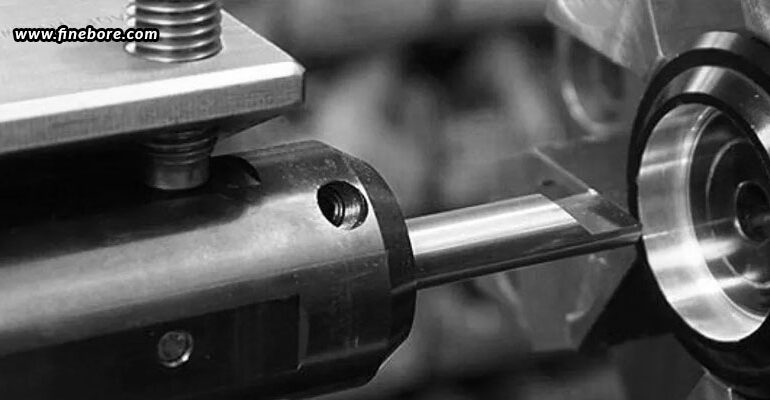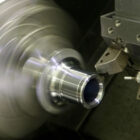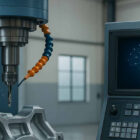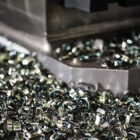Boring operations play a crucial role in precision machining, especially in scenarios that demand strict tolerances and high-quality surface finishes. Traditional boring bars often face challenges such as chatter, tool deflection, and subpar surface quality when working on deep holes. High-frequency vibration-assisted boring bars (HFVABB) have emerged as an innovative solution, significantly improving both surface finish and machining efficiency. This article will delve into the functionality of HFVABB, its benefits compared to conventional boring methods, and its effects on enhancing surface quality.
What are high-frequency vibration-assisted boring bars?
HFVABB are advanced boring tools that utilize high-frequency vibrations during the machining process. These vibrations, typically ranging from 5 kHz to 50 kHz, are integrated into the cutting action, creating an oscillatory motion instead of a continuous cut. This technique enables the tool to intermittently lose contact with the workpiece, which reduces cutting forces and enhances chip removal, ultimately leading to improved surface quality.
How high-frequency vibrations enhance surface finish
- Reduction in cutting forces
Traditional boring bars maintain constant contact with the workpiece, resulting in elevated cutting forces, tool deflection, and subpar surface finishes. High-Frequency Vibration-Assisted Boring Bars (HFVABB) intermittently disrupt the cutting process, which alleviates the forces acting on the tool and mitigates excessive deformation, leading to smoother cuts, decreased friction, and fewer machining inaccuracies.
- Minimization of chatter and vibration-induced marks
Chatter is a significant contributor to unsatisfactory surface finishes in boring tasks. HFVABB effectively reduce chatter by introducing controlled vibrations that counteract self-induced oscillations, thereby enhancing tool stability at greater depths and diminishing the risk of resonance that leads to uneven surface patterns.
- Improved chip evacuation
Conventional boring methods frequently result in chip buildup, which can scratch surface finishes, cause tool breakage, and lead to overheating. HFVABB generate smaller, more manageable chips by fragmenting them into finer pieces, thus preventing chip entanglement and minimizing surface defects.
- Enhanced lubrication and cooling efficiency
The incorporation of vibration assistance improves lubrication and cooling effectiveness by allowing lubricants and coolants to penetrate more deeply into the cutting zone. This results in reduced thermal deformation, enhanced surface integrity, and prolonged tool life.
- Compatibility with hard-to-machine materials
Materials that are difficult to machine, such as titanium, stainless steel, and Inconel, often lead to built-up edges and inferior finishes in traditional boring. HFVABB decrease tool wear while preserving sharpness, enhance surface integrity by reducing microcracks and work hardening, and facilitate higher machining speeds, yielding a superior finish in a shorter time frame.
Industries benefiting from HFVABB
- Aerospace industry
The aerospace industry gains significant advantages from HFVABB, which allows for the precise machining of bores in aircraft engine parts, enhances the surface quality of titanium and nickel alloys, and decreases machining durations for deep-hole tasks.
- Automotive industry
In the automotive industry, HFVABB supports high-precision boring in engine blocks and transmission elements, improves the longevity of machined surfaces for superior performance, and reduces the frequency of tool changes, thereby cutting overall expenses.
- Medical device manufacturing
The manufacturing of medical devices utilizes HFVABB to create complex bore designs in surgical instruments, reduce surface imperfections for biocompatibility, and boost efficiency in machining titanium and stainless-steel implants.
- Oil & gas industry
The oil and gas industry reaps the benefits of HFVABB through accurate boring in drilling apparatus and pipelines, enhanced tool performance in high-temperature conditions, and increased reliability for deep-hole boring tasks.
Challenges and considerations
While HFVABBs offer significant benefits, there are some challenges to consider. The initial investment costs are higher than conventional boring bars, making them a significant expense for smaller workshops. Their complex setup and maintenance require specialized knowledge, as the integration of piezoelectric or electromagnetic actuators demands precise calibration to prevent excessive vibrations that could damage the workpiece. Additionally, compatibility with existing machining systems may be an issue, as some machines require software or hardware modifications to support high-frequency vibration tools. Furthermore, different materials necessitate specific adjustments in vibration frequency to optimize results, adding an extra layer of complexity to the process.
However, with FineTech Toolings at your service, there is no need to worry! FineTech Toolings enhances machining efficiency with precision-engineered high-frequency vibration-assisted boring bars Bangalore. Their advanced designs reduce cutting forces, minimize chatter, and improve chip evacuation, ensuring superior surface finishes. With expert calibration, material-specific tuning, and seamless integration, FineTech Toolings helps industries achieve optimal performance while reducing tool wear and machining time. And, as industries continue to demand higher precision and better surface quality, the adoption of HFVABB will likely increase, paving the way for smarter and efficient machining processes, making HFVABB a valuable investment for manufacturers seeking superior machining performance.






